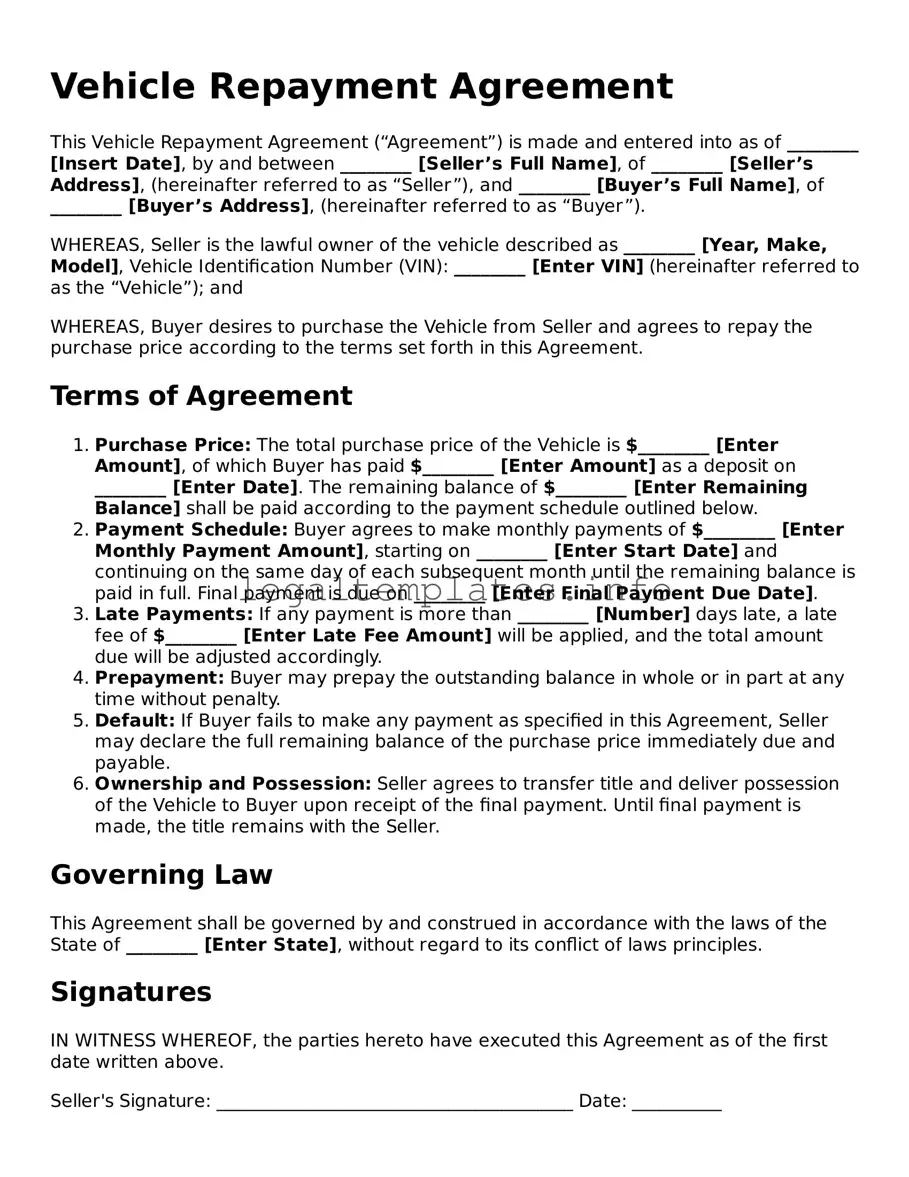What is a Vehicle Repayment Agreement?
A Vehicle Repayment Agreement is a legally binding document that outlines the terms and conditions between a lender and a borrower regarding a loan for a vehicle. This includes the repayment schedule, interest rates, penalties for late payments, and the rights and obligations of both parties.
Why is a Vehicle Repayment Agreement important?
This agreement protects both the lender and the borrower. It ensures that the lender's financial interests are safeguarded and provides a clear repayment plan for the borrower. Additionally, it helps prevent potential disputes by detailing the agreement in writing.
What should be included in a Vehicle Repayment Agreement?
Key elements of this agreement include the identities of the parties involved, vehicle description, loan amount, interest rate, repayment schedule, late payment penalties, and any conditions for the repossession of the vehicle in case of default. It is important to also include any relevant legal provisions governing the agreement.
Who needs to sign the Vehicle Repayment Agreement?
Both the lender (or their authorized representative) and the borrower must sign the agreement. In some cases, co-signers may also be required to sign, providing additional assurance to the lender.
Is a witness or notarization required for a Vehicle Repayment Agreement to be valid?
While requirements can vary by jurisdiction, having a witness or notarizing the document can add an additional layer of validity and may be necessary for enforcement purposes. It's advised to consult local laws to determine specific requirements.
Can a Vehicle Repayment Agreement be modified?
Yes, but any modifications must be made in writing and agreed upon by both parties. Both the lender and the borrower must sign any amendments for them to be valid. This ensures that all changes are mutually agreed upon and legally enforceable.
What happens if a borrower defaults on a repayment?
In the event of a default, the lender has the right to enforce the terms outlined in the agreement, which may include penalties, reporting the default to credit agencies, and repossession of the vehicle. The specific actions will depend on the terms of the original agreement and applicable laws.
How can disputes over a Vehicle Repayment Agreement be resolved?
Disputes should ideally be resolved through direct negotiation between the parties. If this is unsuccessful, mediation or arbitration may be considered as alternate dispute resolution methods. As a last resort, legal action in court can determine the outcome based on the agreement and relevant laws.
